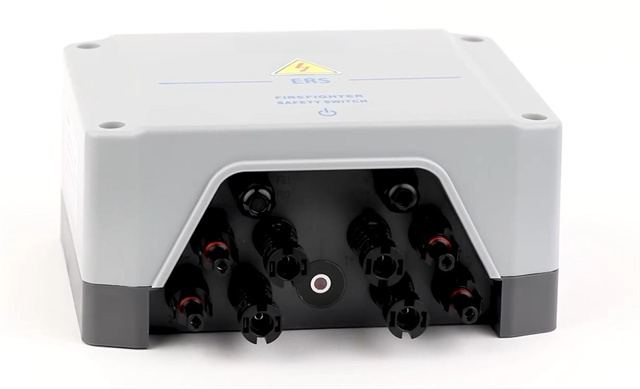Technical Features of Rapid Shutdown in PV Systems
Introduction
The rapid shutdown requirement is an important aspect of photovoltaic (PV) system design and installation. It aims to enhance safety by quickly de-energizing the DC side of a PV system during emergency situations or maintenance activities. This article will discuss the technical features of rapid shutdown in PV systems, including its purpose, methods, and benefits.
Purpose of Rapid Shutdown
Rapid shutdown is primarily implemented to protect first responders, such as firefighters, from potential electric shock hazards when they need to work on a building with an active PV system. During emergencies or maintenance, shutting down the PV system quickly reduces the risk of electric shock and ensures a safer working environment. Furthermore, it also helps prevent damage to the PV system components and minimizes fire risks by cutting off the power source.
Methods and Technologies
There are several methods and technologies available for achieving rapid shutdown in PV systems:
-
Module-Level Power Electronics (MLPE): MLPE devices, such as microinverters or DC optimizers, enable individual module control and rapid shutdown capability. These devices are installed at each solar module, allowing for module-level voltage and current control. In case of an emergency, the MLPE devices can be remotely activated to shut down the modules within seconds.
-
String-Level Rapid Shutdown: This method involves incorporating rapid shutdown devices, such as rapid shutdown combiners, at the string level. These devices are typically installed at the DC combiner box or inverter and allow for collective shutdown of multiple modules connected in series. String-level rapid shutdown provides a cost-effective option for achieving compliance with rapid shutdown requirements.
-
Powerline Communication (PLC): PLC technology utilizes the powerlines of the building to transmit signals and commands for rapid shutdown. By sending specific signals through the powerlines, the PLC devices communicate with compatible devices installed at the module or string levels, triggering rapid shutdown in case of an emergency.
Benefits of Rapid Shutdown
The implementation of rapid shutdown in PV systems offers several benefits:
-
Enhanced Safety: Rapid shutdown significantly reduces the risk of electric shock for first responders by quickly de-energizing the PV system during emergencies or maintenance activities.
-
Compliance with Codes and Standards: Many jurisdictions have adopted rapid shutdown requirements as part of their electrical codes or standards. By implementing rapid shutdown, PV system installers can ensure compliance with these regulations and avoid potential legal issues.
-
Protection of System Components: Rapid shutdown helps protect the PV system components from damage during emergencies, such as fires. By cutting off the power source, it reduces the risk of electrical arcing and potential fire hazards.
-
Improved Firefighter Access: Rapid shutdown facilitates easier access for firefighters to the rooftop or other areas where the PV system is installed. With the PV system safely shut down, firefighters can perform their duties more effectively and efficiently.
Conclusion
Rapid shutdown plays a crucial role in enhancing the safety and functionality of PV systems. By quickly de-energizing the DC side of the system, it protects first responders, ensures compliance with codes and standards, and safeguards the system components. As the PV industry continues to grow, the integration of rapid shutdown technologies will become increasingly important for the safe and efficient operation of PV systems.



